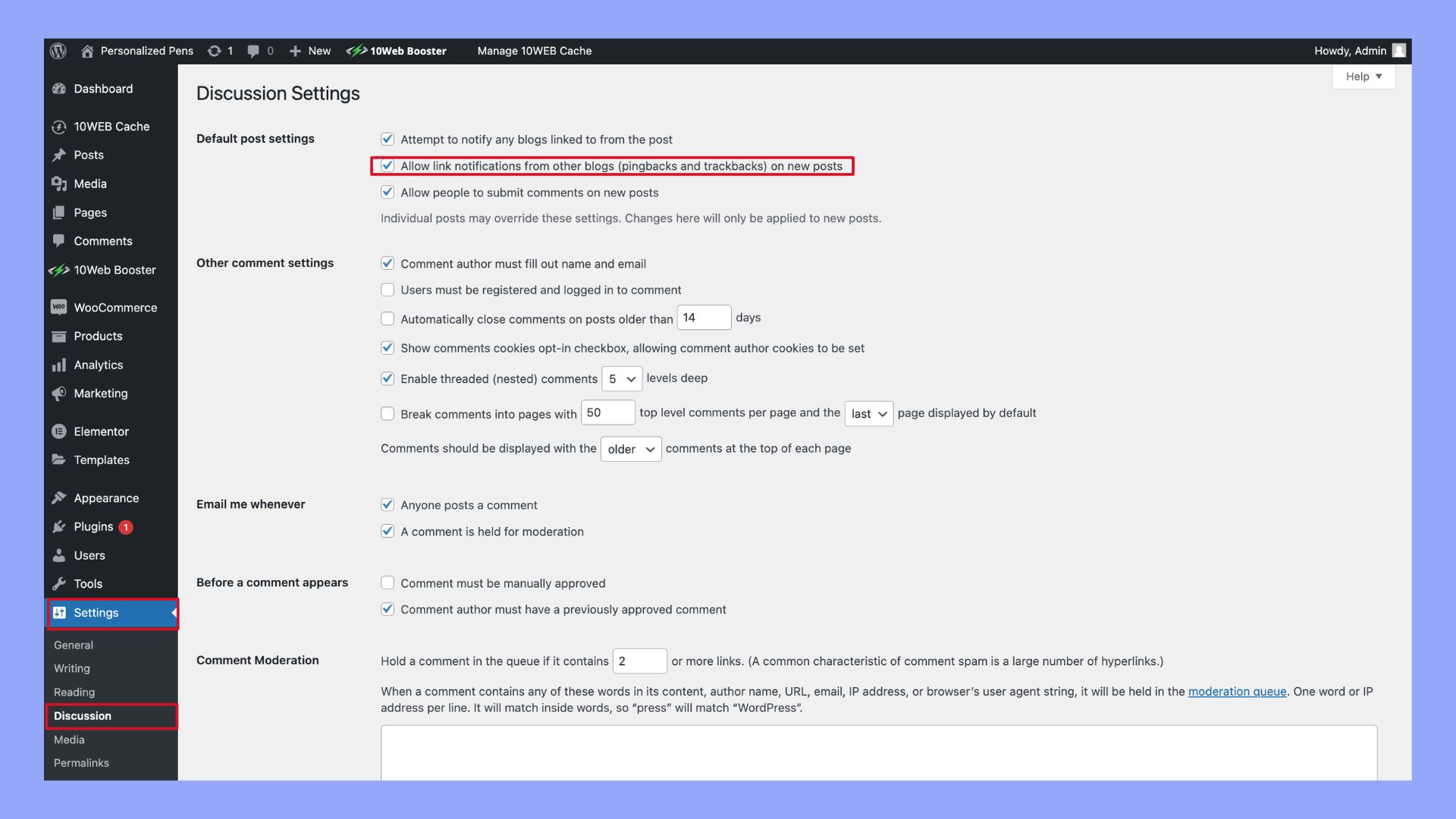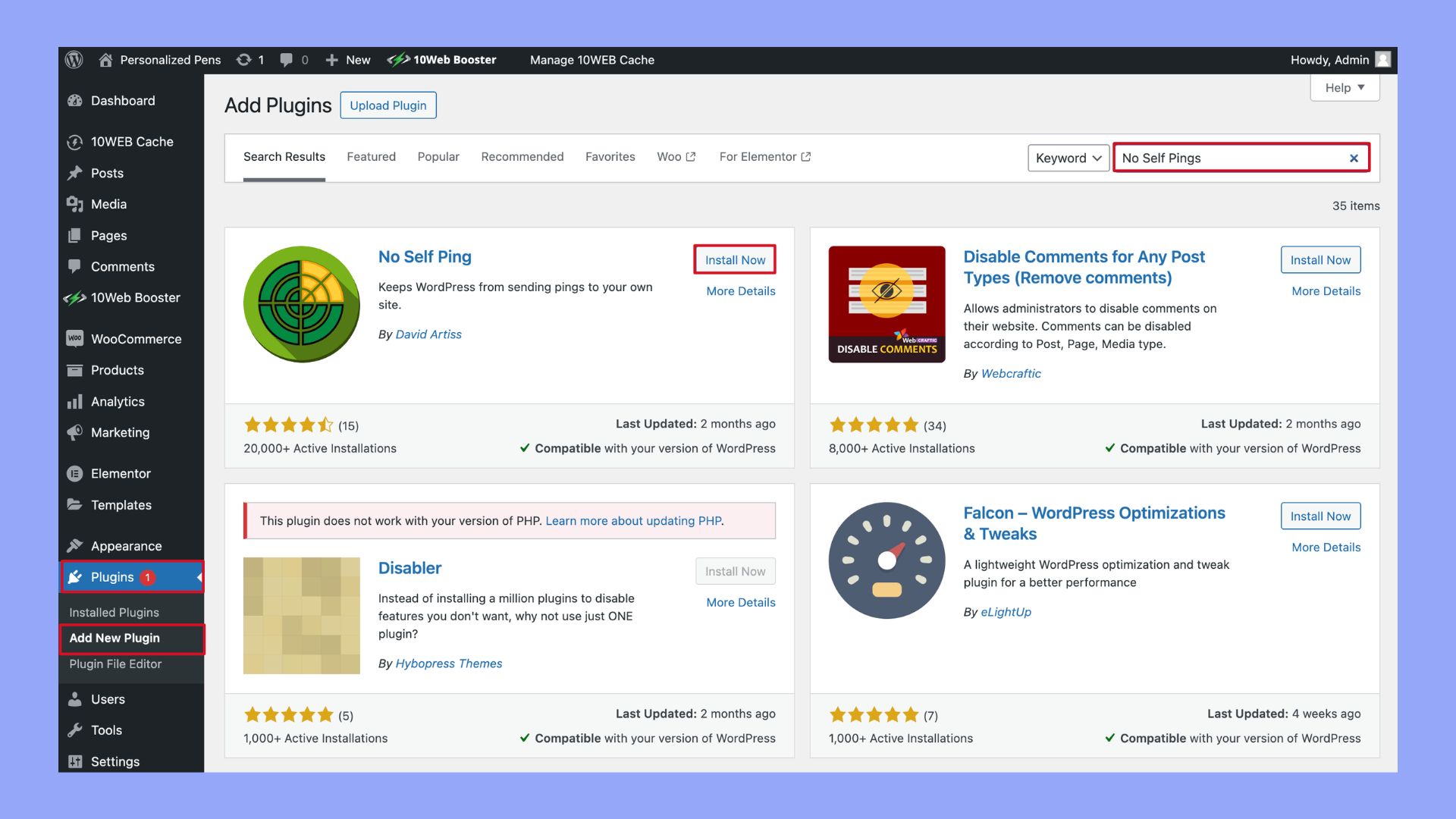What is a WordPress Pingback
If you’re new to WordPress, you might have come across the term Pingback and wondered, WordPress pingback, in simple terms, is an automatic notification sent from one blog to another when you link to their content. It’s a way for WordPress blogs to communicate and let each other know when their articles are being referenced.
Pingbacks are similar to trackbacks but more automated and less prone to spam. When you create a link to another WordPress blog in your post, your site sends this notification to the linked blog, enhancing the connection between the two websites. The linked blog will receive this as a comment showing the link to your post, fostering a kind of discussion across different blogs.
Understanding pingbacks can help you manage your blog’s communication with others more effectively. By leveraging pingbacks, you can keep track of who is linking to your content and engage with other bloggers in your niche. This can help in building relationships and boosting your blog’s visibility.
What is a WordPress pingback?
A WordPress pingback is a special type of notification that gets automatically sent when one site links to another. When you link to another blog post or page on a different WordPress site, your WordPress site sends a pingback to the site you linked to.
Pingbacks notify the other site that it has been linked. If the recipient site has pingbacks enabled, it will show the pingback as a comment in the designated comments section. This can provide an excerpt of the linked content and the URL. These notifications are designed to encourage cross-site engagement and interaction, making them essential for bloggers and ecommerce sites looking to network and build their online presence.
How do WordPress pingbacks work?
WordPress pingbacks operate via a simple process. When you write a post that includes a link to another WordPress site and publish it, your site sends a pingback to the linked site. The recipient site then receives this pingback, which includes details such as the link URL, title, and a small excerpt from your post.
This can be very useful for bloggers as it allows them to track who is linking to their content. For ecommerce sites, it can be a way to track product mentions or reviews. Pingbacks are handled automatically by WordPress, so as long as both sites have pingbacks enabled, the process requires no additional effort from you.
Managing pingback settings
Managing pingback settings in WordPress is essential to control notifications and prevent spam. This section will guide you through enabling, disabling, and customizing pingback settings on your website.
How to enable pingbacks in WordPress
To enable pingbacks, you need to adjust settings in your WordPress dashboard. Here’s how:
- Navigate to your WordPress dashboard.
- Go to Settings > Discussion.
- Check the box labeled Allow link notifications from other blogs (pingbacks and trackbacks).

By enabling this setting, other bloggers will be notified when you link to their content. This can help foster connections and drive traffic to your site.
How to disable all WordPress pingbacks
Disabling all pingbacks can help you avoid spam and unwanted notifications. Follow these steps:
- Open your WordPress dashboard.
- Navigate to Settings > Discussion.
- Uncheck the box that says Allow link notifications from other blogs (pingbacks and trackbacks).
This will stop all pingback notifications on your site. It’s a simple way to keep your site cleaner and reduce spam.
How to disable pingbacks on a specific post
If you want to disable pingbacks for individual posts, WordPress lets you customize this setting per post. Here’s how:
- Edit the post you want to modify.
- In the post editor, find the Discussion section (you might need to enable it in Screen Options at the top).
- Uncheck the box labeled Allow pingbacks & trackbacks on this post.
This setting is useful if you want to control pingbacks on a case-by-case basis without affecting your entire site.
How to disable self-pingbacks
Self-pingbacks occur when you link to your own posts. To avoid this, follow these steps:
- Log into your WordPress admin panel.
- Go to Plugins > Add New.
- Search for a plugin such as No Self Pings.
- Install and then Activate it.

This will prevent your site from sending pingbacks to itself, keeping your notifications cleaner and more relevant.
These settings will help you manage what is a WordPress pingback effectively on your site. By customizing these options, you can improve user experience and maintain control over your site’s interactions.
The benefits and drawbacks of pingbacks
Pingbacks can be useful for your WordPress site in several ways.
- They can help increase traffic. When your site links to another, a notification (the pingback) is sent. This can attract readers from the linked site who are interested in your content.
- Pingbacks can improve your SEO (search engine optimization). They create backlinks, which can enhance your site’s search engine rankings. Having many backlinks often means your site is seen as more trustworthy by search engines.
Despite these benefits, pingbacks have some drawbacks. Here are some of them:
- A major issue is spam. Unscrupulous sites can flood your blog with spammy pingbacks. This not only clutters your site but can also harm your site’s reputation.
- Another concern is the need for moderation. You might need to sift through numerous pingbacks to decide which ones to approve. This can be time-consuming and tedious.
- Pingbacks might also affect your site’s performance. If your theme isn’t optimized, handling many pingbacks can slow down your blog.
While pingbacks can connect you with other authors and enhance discussion, they require careful management.
Understanding the pros and cons will help you decide if enabling pingbacks is right for your WordPress site.
Pingbacks as a tool for SEO
Pingbacks can be a useful tool in your SEO strategy. When another blogger links to your content, a pingback is created. This not only shows the link between your blogs but can also enhance your website’s search engine optimization.
When you receive a pingback, it helps search engines like Google see that your content is valuable. This is because other bloggers are linking to it, which can increase your website’s authority.
Here are some ways pingbacks can benefit your SEO:
- Backlink creation: Search engines rank your site higher if there are many high-quality backlinks. Pingbacks are a way to get these backlinks without extra work.
- Increased traffic: As your links appear on other articles, readers may click through to your site, boosting your traffic.
- Networking: Pingbacks can help connect you with other bloggers in your niche, leading to more collaborations and backlinks.
To manage pingbacks, make sure you have them enabled in your WordPress settings. This way, you can take full advantage of the SEO benefits they offer.
Understanding what is a WordPress pingback and using it effectively can improve your site’s visibility and drive more traffic. Use them wisely, and they can be a great addition to your overall SEO strategy.
Preventing malicious pingbacks
Pingbacks in WordPress can sometimes be annoying or even dangerous. Malicious pingbacks can flood your site with spam or even attempt security breaches.
To avoid these issues, you can take a few steps:
- Navigate to Settings > Discussion and uncheck the option for Allow link notifications from other blogs (pingbacks and trackbacks).
- Enable moderation for all incoming pingbacks.
- This lets you approve or reject any received pingbacks.
- Check the Settings > Discussion for these options.
Manual verification
- Always verify the source of the pingback
- Make sure it’s from a legitimate and safe website before approving it
Use security plugins
- Consider installing security plugins like Wordfence or Sucuri.
- These plugins can block spam and protect against malicious activities.
By taking these precautions, you can keep your WordPress site safe from malicious pingbacks and spam.
WordPress pingbacks can help boost your site’s SEO by facilitating interlinks with other sites. This feature can help you engage with the community and build discussion around your content.
Remember, with WordPress settings, you can control and even disable pingbacks if needed. It is essential to understand how this feature works to make the most out of it for your blog or website.
Exploring and utilizing pingbacks can enhance your site’s marketing efforts. Web hosting platforms like WordPress often include tools to manage this and other key features. Consider experimenting with the classic editor to see how pingbacks integrate with your existing workflow.






